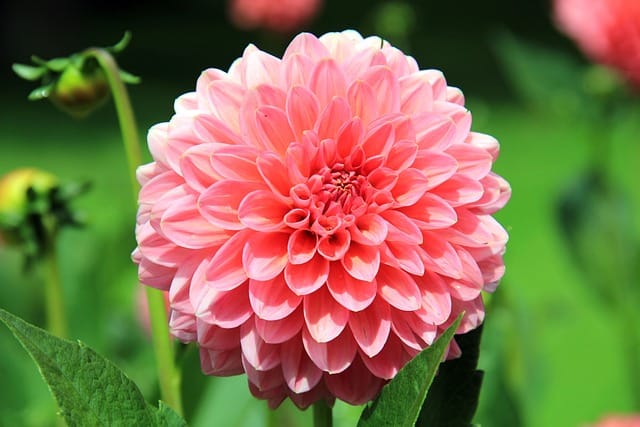Fighting gardening pests: Azalea bark scales
Azalea bark scales (Eriococcus azaleae) are small, sap-sucking insects that can infest azalea plants, causing significant damage if left unchecked

In this article:
- Introduction: Understanding the threat of Azalea bark scales
- Identification: How to identify Azalea bark scales and their life cycle
- Signs and Symptoms: Recognizing the presence of Azalea bark scales in your garden
- Impact on Azaleas: Understanding the damage caused by Azalea bark scales
- Spreading and Prevention: How Azalea bark scales spread and tips for prevention
- Natural Control Methods: Using organic and natural techniques to combat Azalea bark scales
- Chemical Control: Exploring chemical options for controlling Azalea bark scales
- Pruning and Sanitation: Maintaining healthy azalea plants through proper pruning and sanitation practices
- Integrated Pest Management (IPM): Implementing IPM strategies for long-term pest control
- Other Common Garden Pests: Brief overview of other common pests that may affect azaleas
- Conclusion: Taking proactive measures to protect your azaleas from Azalea bark scales
Introduction: Understanding the threat of Azalea bark scales
Azalea bark scales (Eriococcus azaleae) are small, sap-sucking insects that can infest azalea plants, causing significant damage if left unchecked. They belong to the family Eriococcidae and are commonly found in gardens and landscapes where azaleas are grown. Understanding the threat they pose is crucial in maintaining the health and beauty of your azalea plants.
Identification: How to identify Azalea bark scales and their life cycle
Azalea bark scales are small, round-shaped insects with a hard, waxy covering. They usually appear as brown or gray bumps on the stems, twigs, and branches of azalea plants. During their life cycle, these scales go through different stages including eggs, nymphs, and adult scales. Learning to identify them at each stage is important for effective pest management.
Signs and Symptoms: Recognizing the presence of Azalea bark scales in your garden
There are several signs and symptoms that can indicate the presence of Azalea bark scales in your garden. These include yellowing or wilting foliage, sticky honeydew secretions on leaves, sooty mold growth, and the presence of crawlers or adult scales on the plant. Being able to recognize these signs will help you take timely action against the infestation.
Impact on Azaleas: Understanding the damage caused by Azalea bark scales
Azalea bark scales can cause significant damage to azalea plants if left untreated. They weaken the plants by sucking their sap and depriving them of essential nutrients. This can result in stunted growth, wilting, yellowing leaves, leaf drop, and even death of the affected azaleas. It is essential to address the infestation to prevent further damage.
Spreading and Prevention: How Azalea bark scales spread and tips for prevention
Azalea bark scales can spread through natural means such as wind, or via human intervention like transferring infested plants or contaminated tools. To prevent the spread of these scales, it is important to practice good garden hygiene, inspect new plants before adding them to your garden, and isolate infested plants. Implementing these preventive measures will help protect your azaleas.
Natural Control Methods: Using organic and natural techniques to combat Azalea bark scales
If you prefer to use organic and natural techniques to control Azalea bark scales, there are several options available. These include introducing beneficial insects, like ladybugs, using insecticidal soaps or neem oil, pruning out heavily infested areas, and practicing regular plant inspection. These methods can effectively reduce the scale population and minimize their damage.
Chemical Control: Exploring chemical options for controlling Azalea bark scales
If natural control methods are not sufficient or the infestation is severe, chemical control options can be explored. Insecticides specifically formulated for scale insects can be used, following the instructions provided by the manufacturer. It is important to choose a suitable product, apply it correctly, and exercise caution to avoid any negative impact on the environment.
Pruning and Sanitation: Maintaining healthy azalea plants through proper pruning and sanitation practices
Maintaining healthy azalea plants is crucial in preventing and managing Azalea bark scales. Regular pruning and removal of infested plant parts can help control the spread of scales. Sanitation practices, such as cleaning tools and sterilizing pots, also play a role in reducing the risk of infestation. By adopting these practices, you can create an environment less favorable for scale insects.
Integrated Pest Management (IPM): Implementing IPM strategies for long-term pest control
Integrated Pest Management (IPM) is an effective approach for long-term pest control, including Azalea bark scales. It involves combining different control strategies such as cultural, mechanical, biological, and chemical methods in a holistic and sustainable manner. By implementing IPM strategies, you can achieve effective pest management while minimizing the use of pesticides.
Other Common Garden Pests: Brief overview of other common pests that may affect azaleas
In addition to Azalea bark scales, there are other common pests that may affect azaleas. These include azalea lace bugs, spider mites, aphids, and azalea caterpillars. Understanding the signs, symptoms, and control methods for these pests can help you develop a comprehensive pest management plan for your azalea plants.
Conclusion: Taking proactive measures to protect your azaleas from Azalea bark scales
Azalea bark scales can pose a significant threat to the health and beauty of your azalea plants. Recognizing the signs, understanding their life cycle, and implementing effective control measures are essential in protecting your azaleas from this pest. By taking proactive measures and adopting a holistic approach to pest management, you can ensure the long-term health and vibrancy of your azalea garden.
